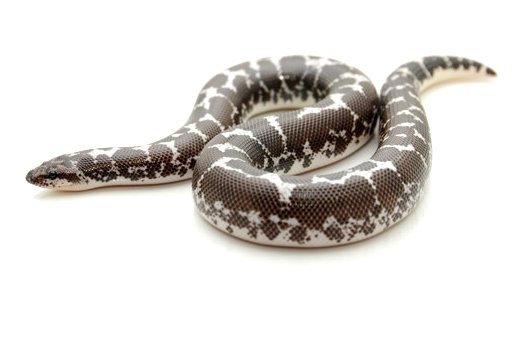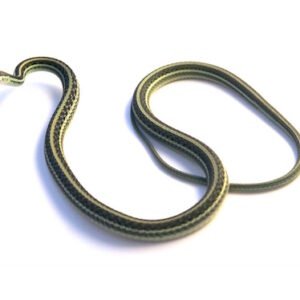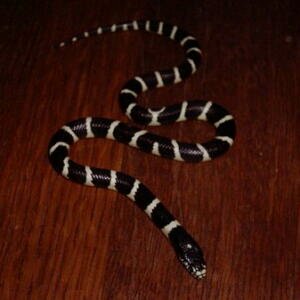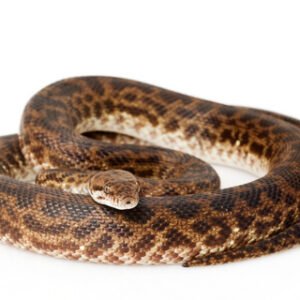Understanding the Black and White Kenyan Sand Boa
The black and white Kenyan sand boa (Eryx colubrinus) is a fascinating species native to the arid and semi-arid regions of Kenya. Renowned for its distinct coloration, this snake typically exhibits a striking pattern of black and white or cream bands that provide effective camouflage against its sandy habitat. Adult sand boas usually range from 50 to 100 centimeters in length, with some individuals potentially exceeding this size under optimal conditions. These physical characteristics not only serve as a protective mechanism but also render them visually captivating to reptile enthusiasts.
In terms of habitat preferences, the black and white Kenyan sand boa is commonly found in sandy or loose soil environments, which facilitate its burrowing behavior. This species is known for its ability to quickly burrow into the ground, utilizing its muscular body and distinct scales to navigate through the substrate. Such adaptations are crucial for both thermoregulation and avoiding predation. They tend to make temporary burrows that provide shelter and protection from the harsh sun during the day, emerging in the cooler evenings to hunt for food.
The diet of the black and white Kenyan sand boa primarily consists of small mammals, particularly rodents, which it captures using a precise ambush technique. These snakes are non-venomous constrictors; they subdue their prey by wrapping around them and applying pressure until the prey is unable to breathe. Their feeding patterns highlight their role in the ecosystem, acting as both predator and prey within their native surroundings. Distribution-wise, they can be found in various regions across Kenya, particularly in areas where their favored sandy terrain is prevalent. Factors such as habitat destruction and climate change pose potential threats to their population, underscoring the importance of conservation efforts to ensure the survival of this captivating species in the wild.
Care and Keeping of Black and White Kenyan Sand Boas in Captivity
Maintaining the health and well-being of black and white Kenyan sand boas in captivity requires attention to several fundamental aspects, including habitat conditions, dietary needs, and preventive health practices. By providing an appropriate environment, snake owners can ensure these fascinating reptiles thrive in their care.
In terms of habitat, it is crucial to replicate the natural environment of the black and white Kenyan sand boa. A secure enclosure that is at least 20-gallons in size is advisable to give ample space for movement and exploration. The substrate should consist of fine aspen bedding or sand, which allows the snake to burrow and exhibit natural behaviors. Temperature control is vital; maintaining a basking area at around 88-92°F and a cooler end between 75-80°F is optimal. Additionally, humidity levels should be kept moderate, ensuring they remain around 40-60% for proper shedding and respiratory health.
Feeding black and white Kenyan sand boas typically involves a diet consisting of appropriately sized rodents, such as mice or rats, based on the snake’s size. It is best to feed them every 7-10 days, monitoring their weight to adjust feeding as necessary. Juvenile snakes often require smaller prey, while adults can consume larger rodents. Always ensure that feeding occurs in a separate enclosure or in a distinctly clean area to promote a healthy feeding routine.
Occasionally, snake owners may encounter common health issues, such as shedding problems, respiratory illnesses, or parasites. Regular vet check-ups and maintaining optimal habitat conditions can help prevent these issues. Furthermore, recognizing signs of stress or distress, such as lethargy or lack of appetite, is critical in managing their health. Ultimately, taking on the responsibility of keeping black and white Kenyan sand boas in captivity can be rewarding, offering an engaging experience for both novice and seasoned snake enthusiasts.





